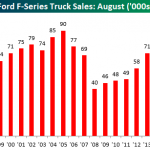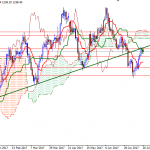
The euro and sterling extended their recovery from the US hourly earnings lows seen before the weekend. However, the move stalled in the European morning, after the UK reported better than expected earnings itself.
Sterling approached the 61.8% retracement of the decline from the July high (~$1.3365) found just below $1.31. It has been correcting higher since reaching almost $1.2660 on August 15.
The position adjustment has been helped by more constructive comments from the EC on Brexit, with Barnier’s comments suggesting that a deal could be reached in the next eight weeks. This follows perceptions that the risks of a Brexit without a deal had increased. UK economic data, including a strong service PMI, yesterday’s GDP figures, and today stronger than expected weekly earnings data also helped lift sterling to its best level since early August today.
Excluding bonus payments, weekly earnings rose 2.9% in the three-months year-over-year through July. This was stronger than expected and matches the cyclical high from March, which was the highest in nearly three years. However, below the surface, there were some warning signs. The claimant count increased by 8.7k after an upward revision to 10.2k in July. It has risen by an average of 10.2k this year after being virtually flat in the same 2018 period. Employment growth has also slowed.
We argue that UK Prime Minister faces a trilemma. We do not think she can please three different parties: her cabinet, Parliament, and the EU. The EC has sounded more constructive, the basis of it, May’s Chequers plan, faces domestic pressure from within her cabinet and Parliament. May’s strategy seems to be to secure a deal with the EU and then sell it domestically. Also, the way the negotiations seem to work, the most difficult issues are addressed last and even at this late date; more work needs to be done on the Irish border.













Leave A Comment